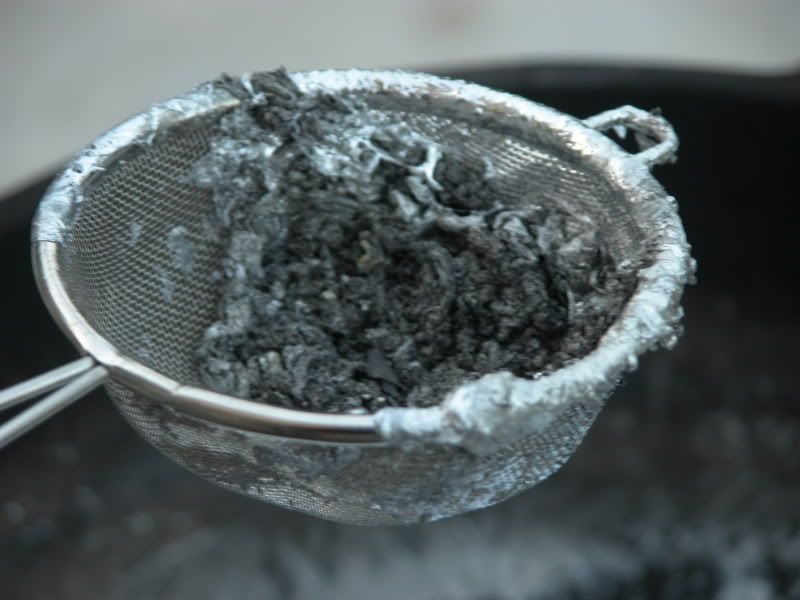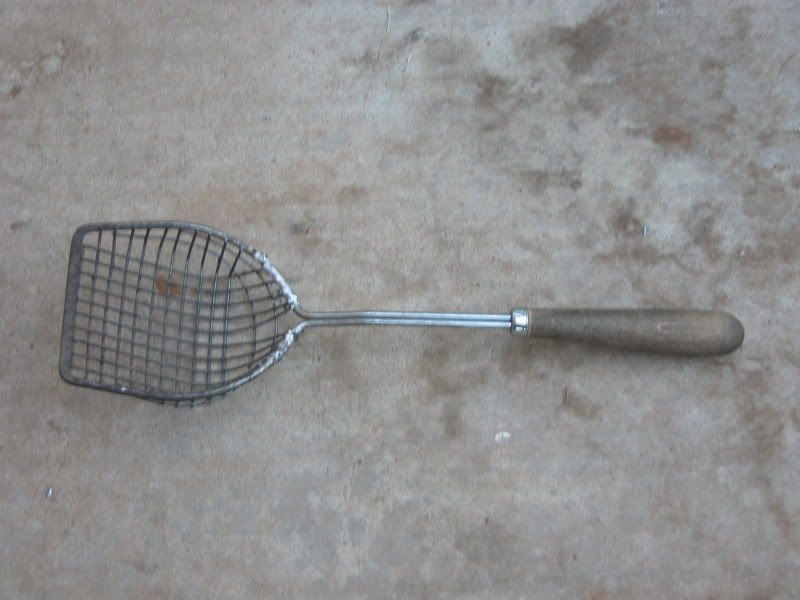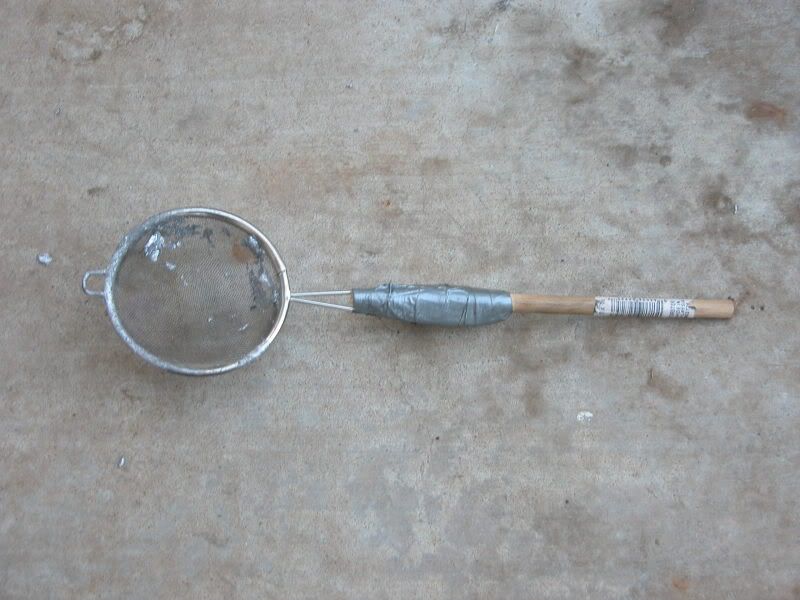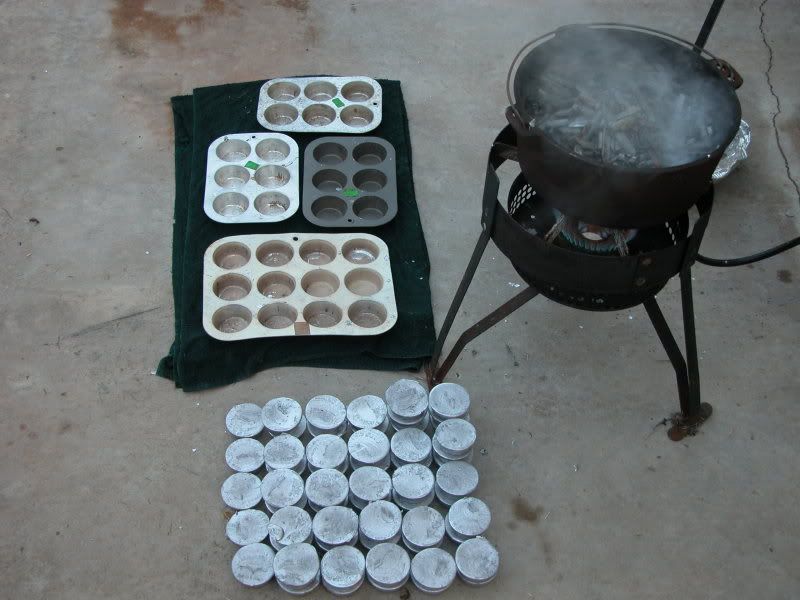You are using an out of date browser. It may not display this or other websites correctly.
You should upgrade or use an alternative browser.
You should upgrade or use an alternative browser.
Some info on wheel weights....
- Thread starter Doc Hoy
- Start date
Just a quick tip for the beginners; Casting really should involve two seperate and distinct melting operations if you are using mystery metal or scrap or even Wheel Weights.
1. Make ingots first - don't start casting bullets by dropping your scrap/scrounged lead into your actual bullet casting pot.
Instead, get or make yourself a larger cast iron dutch oven pot or cut a BBQ propane tank in half and use a turkey fryer propane burner to melt your scrap/scrounged lead in.
Take out all your floaters (clips, zinc, screws, rocks, and such) then flux a few times stirring and scraping the bottom and sides aggressively.
Scoop out the dross and ashes and such then pour your lead into approx 2lb ingots using whatever you can get. I like the older 1 piece muffin tins. I find them at yard sales or thrift stores (don't use modern muffin tins. They solder the cups to the flat part and your lead's heat just melts them and they come off.)
2. After you have a good pile of ingots, take those to your nice clean electric pot or a smaller pot over propane, and repeat the melting and fluxing. You will still get some "crap" in your melt that comes out when you flux but FAR LESS than if you start with your scrap/scrounged lead.
I made some pretty bad bullets my first time... someone set me straight with the above advice and I'm just passing it on.
1. Make ingots first - don't start casting bullets by dropping your scrap/scrounged lead into your actual bullet casting pot.
Instead, get or make yourself a larger cast iron dutch oven pot or cut a BBQ propane tank in half and use a turkey fryer propane burner to melt your scrap/scrounged lead in.
Take out all your floaters (clips, zinc, screws, rocks, and such) then flux a few times stirring and scraping the bottom and sides aggressively.
Scoop out the dross and ashes and such then pour your lead into approx 2lb ingots using whatever you can get. I like the older 1 piece muffin tins. I find them at yard sales or thrift stores (don't use modern muffin tins. They solder the cups to the flat part and your lead's heat just melts them and they come off.)
2. After you have a good pile of ingots, take those to your nice clean electric pot or a smaller pot over propane, and repeat the melting and fluxing. You will still get some "crap" in your melt that comes out when you flux but FAR LESS than if you start with your scrap/scrounged lead.
I made some pretty bad bullets my first time... someone set me straight with the above advice and I'm just passing it on.
maillemaker
New member
My muffin tin has separate pieces to make the pockets, but I have had no problem with them de-soldering - maybe they are welded on?
But this made me think of another tip: don't use tin-plated muffin tins. The lead will alloy to the tin and will not come out of the mold. You'll have to cut it out, destroying the muffin pan.
The guy who taught me how to cast showed me a tin like this with the ingots permanently in place. I was able to teach him what caused it because I had read about it on the web before my training session.
Steve
But this made me think of another tip: don't use tin-plated muffin tins. The lead will alloy to the tin and will not come out of the mold. You'll have to cut it out, destroying the muffin pan.
The guy who taught me how to cast showed me a tin like this with the ingots permanently in place. I was able to teach him what caused it because I had read about it on the web before my training session.
Steve
hmmm...heres another question: I've been using a stainless steel pot as my casting pot, which is better cast iron or stainless? I've used both and the stainless heats much more quickly...there shouldn't be any alloying going on with my casting pot since iron/steel needs nearly 2000 degrees to melt, right?
maillemaker
New member
The material of the pot probably doesn't matter. I think the cast iron pots work well because they are very thick and thus hold heat well.
Steve
Steve
I had forgotten about the tin muffin pans!
I had one do that to me once as well. I'd forgotten about it. Good tip.
As for pot material, I'd stay away from aluminum sauce pans.
I stole an old one from the kitchen and after about a year, the bottom began to sag bad enough that it would not sit flat on the coleman camp stove I'd been using. I doubt it would have ever broke open or melted, but it did deform badly. I went to a steel pan and shortly after went with an electric melting pot.
My ingot making pot has always been a large cast iron pot with a lid. I thought about using the stainless pot that came with the turkey fryer burner but it was so hand to user for.... well, frying turkeys... who'd have thought?
I had one do that to me once as well. I'd forgotten about it. Good tip.
As for pot material, I'd stay away from aluminum sauce pans.
I stole an old one from the kitchen and after about a year, the bottom began to sag bad enough that it would not sit flat on the coleman camp stove I'd been using. I doubt it would have ever broke open or melted, but it did deform badly. I went to a steel pan and shortly after went with an electric melting pot.
My ingot making pot has always been a large cast iron pot with a lid. I thought about using the stainless pot that came with the turkey fryer burner but it was so hand to user for.... well, frying turkeys... who'd have thought?
maillemaker
New member
Last weekend I was rendering wheel weights using my burner and my dutch oven, and it was cold out, so it was taking a long time to melt and sustain the melt.
So I took some sheet metal and formed it into a big loop, making a shield around the whole pot. As it was burning on the burner, I also took a big wad of fiberglass insulation and laid it on top of the pot, mostly filling the "baffle" I made to surround the pot.
This lets the heat that rolls off the bottom of the pot surround the sides of the pot. More heat goes into the lead and less out into open space. This drastically improved the melt time, which saves gas.
Steve
So I took some sheet metal and formed it into a big loop, making a shield around the whole pot. As it was burning on the burner, I also took a big wad of fiberglass insulation and laid it on top of the pot, mostly filling the "baffle" I made to surround the pot.
This lets the heat that rolls off the bottom of the pot surround the sides of the pot. More heat goes into the lead and less out into open space. This drastically improved the melt time, which saves gas.
Steve
rigmarol said:Take out all your floaters (clips, zinc, screws, rocks, and such) then flux a few times stirring and scraping the bottom and sides aggressively.
Flux first, then remove the floaters. The reason that I say that is because during the smelting process, some tin will leach (this is probably the wrong word) out of the melt. You don't want to discard the tin with the dross, so fluxing first, then skimming will make sure that you've both reduced the tin and separated the contaminants.
Hardcase, good advice, no argument from me on it at all.
However, my technique involves a French Fry spoon that is impossible to take away any tin or "good stuff". So I'm not wasting flux on the trash.
Here's some of my Ingot casting tools:
Starting with Wheel Weights my turkey fryer and cast iron pot:

French Fry spoon to get the trash out:

Fluxing with Gulf Wax. Yes it ignites, that's ok.


Stir and scrape the bottom and sides agressively then remove using a tea strainer. The lead goes right through it leaving the "bad stuff" in the strainer:


However, my technique involves a French Fry spoon that is impossible to take away any tin or "good stuff". So I'm not wasting flux on the trash.
Here's some of my Ingot casting tools:
Starting with Wheel Weights my turkey fryer and cast iron pot:

French Fry spoon to get the trash out:

Fluxing with Gulf Wax. Yes it ignites, that's ok.


Stir and scrape the bottom and sides agressively then remove using a tea strainer. The lead goes right through it leaving the "bad stuff" in the strainer:





